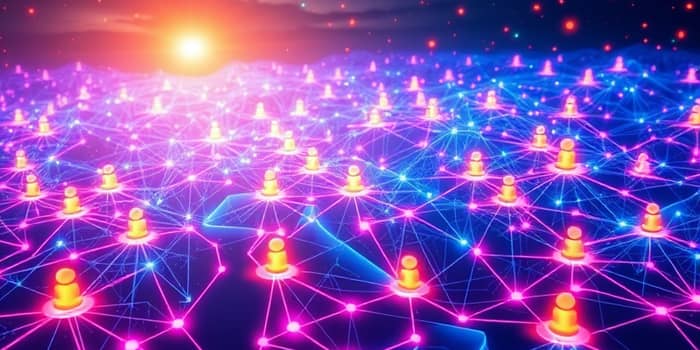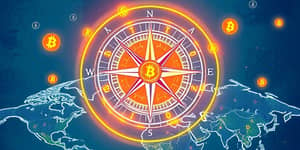As we stand at the cusp of a new digital era, the promise of Web3 shines with the potential to transform how we live, work, and connect. This open, decentralized, user-controlled internet ecosystem aims to return control and ownership to individuals, challenging the dominance of centralized platforms and offering fresh possibilities for innovation and collaboration.
In this comprehensive exploration, we unpack the origins of Web3, dissect its defining features, weigh its opportunities and criticisms, and gaze into the horizon to understand what lies ahead for the next iteration of the World Wide Web.
What Is Web3?
Web3, often referred to as Web 3.0, represents the third generation of internet architecture. Unlike its predecessors—Web1’s static, read-only pages and Web2’s interactive social platforms—Web3 is built on blockchain-based, trustless protocols without intermediaries. It envisions a digital realm where individuals truly own their data, engage peer-to-peer, and participate in decentralized applications (dApps) without relying on centralized authorities.
At its core, Web3 leverages cryptographic ledger systems to ensure transparency, immutability, and security. By embedding economic incentives through tokens and smart contracts, it aims to create novel business models that reward contributors rather than exploiting user data for profit.
The Evolution from Web1 to Web3
Understanding Web3’s significance requires a glance at its lineage. Each web era has addressed the limitations of its predecessor while introducing new paradigms of interaction.
This progression highlights how each phase expanded user capability: from consuming information, to creating content and social engagement, now evolving toward true data ownership and decentralized governance.
Core Features of Web3
Web3 introduces a set of transformative elements designed to reshape the internet’s power dynamics and technical foundations. Key features include:
- Decentralization across distributed networks, eliminating single points of failure.
- User data ownership on blockchain ledgers, ensuring privacy and sovereignty.
- Trustless, peer-to-peer interactions via smart contracts and cryptographic proofs.
- Token-based economic models that reward contributions, from NFTs to governance tokens.
- Community-driven governance through DAOs, letting stakeholders vote on protocol changes.
- Semantic web integration with AI for context-aware applications.
Contrasting Web2 and Web3
While Web2 brought dynamic content and social engagement, it also centralized power and monetized personal information. In contrast, Web3 shifts control from corporations to individuals, striving for censorship-resistant, user-empowered environments. Where Web2 profits often rely on data mining and targeted advertising, Web3 encourages transparent token economies and fair value exchange.
Opportunities and Potential Impact
Embracing Web3 could spark profound changes across industries, unlocking new models of participation and value creation:
- Disrupting Big Tech monopolies by offering alternative platforms.
- Enabling peer-to-peer finance (DeFi) without traditional banks.
- Fueling creator economies through NFTs, royalties, and smart contracts.
- Fostering global financial inclusion via borderless transactions.
- Empowering communities with transparent, auditable governance.
These innovations promise a more equitable digital landscape, where users become true stakeholders in the ecosystem rather than passive consumers.
Challenges and Criticisms
Despite its potential, Web3 faces significant hurdles on its path to mainstream adoption. Critics point to issues of scalability, user experience, and centralization of power in early token distributions.
- Scalability constraints and high transaction fees on popular blockchains.
- Complex user interfaces and steep learning curves for newcomers.
- Concentration of token holdings among early investors.
- Regulatory uncertainty surrounding cryptocurrencies and DAOs.
- Environmental concerns driven by energy-intensive consensus methods.
Addressing these concerns requires collaborative research, protocol improvements, and thoughtful regulation to foster sustainable growth.
Looking Ahead: The Future of Web3
Web3 remains in its formative stages, with approximately 600 million users exploring decentralized networks today, compared to billions on Web2. Developer interest is rising, but bridging the gap to mainstream adoption demands continued innovation in scalability, privacy, and user experience.
As major technology companies, venture funds, and grassroots communities pour resources into blockchain research and standards development, the vision of a resilient, user-empowered internet draws closer. Whether through hybrid models that blend Web2 interfaces with Web3 backends, or breakthroughs in zero-knowledge proofs and layer-2 networks, progress will hinge on solving current limitations.
Ultimately, Web3’s success depends on our collective ability to craft inclusive, transparent systems that align incentives and foster trust without centralized gatekeepers. By embracing the principles of decentralization, tokenized economies, and community governance, we can usher in an era where the internet truly serves its users, not the other way around.
As you explore the possibilities of Web3—whether as a developer, entrepreneur, or end user—remember that this frontier invites participation, innovation, and shared responsibility. The next chapter of the internet is being written now, and with thoughtful engagement, it can be the most empowering one yet.
References
- https://www.simplilearn.com/tutorials/blockchain-tutorial/what-is-web-3-0
- https://www.hiro.so/blog/the-reign-of-centralized-apps-is-ending
- https://en.wikipedia.org/wiki/Web3
- https://metana.io/blog/web2-vs-web3-whats-the-difference-the-breakthrough/
- https://aws.amazon.com/what-is/web3/
- https://www.casper.network/get-started/web3-vs-web-2-0-caspers-guide
- https://www.coursera.org/articles/web-three
- https://zircon.tech/blog/web2-vs-web3/










